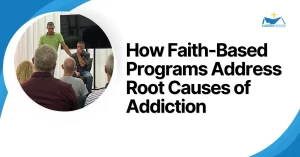

Alcoholic can be defined as an individual whose continued or excessive drinking results in impairment of personal health, disruption of family and social relationships, and loss of economic security. Alcohol abuse is a leading cause of morbidity and mortality throughout the world. It is estimated in the United States that as many as 10 % of men and 3 % of women may suffer from persistent problems related to the use of alcohol.
There are many physical effects that an alcoholic experiences. Alcohol affects many organ systems of the body, but perhaps most notably affected are the central nervous system and the liver. Almost all ingested alcohol is metabolized in the liver and excessive alcohol use can lead to acute and chronic liver disease. Liver cirrhosis resulting from alcohol abuse is one of the ten leading causes of death in the United States. From data obtained in autopsy studies, it appears that between 10 % and 15 % of alcoholic individuals had cirrhosis at the time of death. It is unknown why some alcoholic people develop liver disease while others do not. One possibility is that there are genetic factors that predispose some alcoholic individuals to liver disease. Some data also suggest that co-factors such as chronic infection with hepatitis C virus may increase the risk of the development of cirrhosis in an alcoholic. In general, women who drink an equal amount of alcohol are at higher risk than men for the development of liver disease. This is probably because of decreased metabolism of alcohol in the stomach prior to absorption.
If an alcoholic is unwilling to seek help, is there any way to get him or her into treatment? This can be a challenging situation. An alcoholic cannot be forced to get help except under certain circumstances, such as when a violent incident results in police being called or following a medical emergency. However, this doesn’t mean that you have to wait for a crisis to make an impact. Based on clinical experience, many alcoholism treatment specialists recommend the following steps to help an alcoholic accept treatment:
Stop all “rescue missions.” Family members often try to protect an alcoholic from the results of his or her behavior by making excuses to others about his or her drinking and by getting him or her out of alcohol-related jams. It is important to stop all such rescue attempts immediately so that the alcoholic will fully experience the harmful effects of his or her drinking. This can be a big motivation for the alcoholic to stop.
Be specific. Tell the family member that you are concerned about his or her drinking and want to be supportive in getting help. Back up your concern with examples of the ways in which his or her drinking has caused problems for both of you, including the most recent incident.
State the consequences. Tell the family member that until he or she gets help, you will carry out consequences. This is not to punish the drinker, but to protect yourself from the harmful effects of the drinking. These may include refusing to go with the person to any alcohol-related social activities or even moving out of the house. Do not make any threats you are not prepared to carry out.
Be ready to help. Gather information in advance about local treatment options. If the person is willing to seek help, call immediately for an appointment with a treatment program counselor.
Call on a friend. If the family member still refuses to get help, ask a friend to talk with him or her, using the steps described above. A friend who is a recovering alcoholic may be particularly persuasive, but any caring, nonjudgmental friend may be able to make a difference. The intervention of more than one person is often necessary to persuade an alcoholic person to seek help. Multiple interventions may also be necessary.
Find strength in numbers. With the help of a professional therapist, some families join with other relatives and friends to confront an alcoholic as a group. While this approach may be effective, it should only be attempted under the guidance of a therapist who is experienced in this kind of group intervention.
Newsletter Signup
Discipleship Training
“The teaching of the wise is a Fountain of Life, turning a person from the snares of death.”
Proverbs 13:14 NIV

